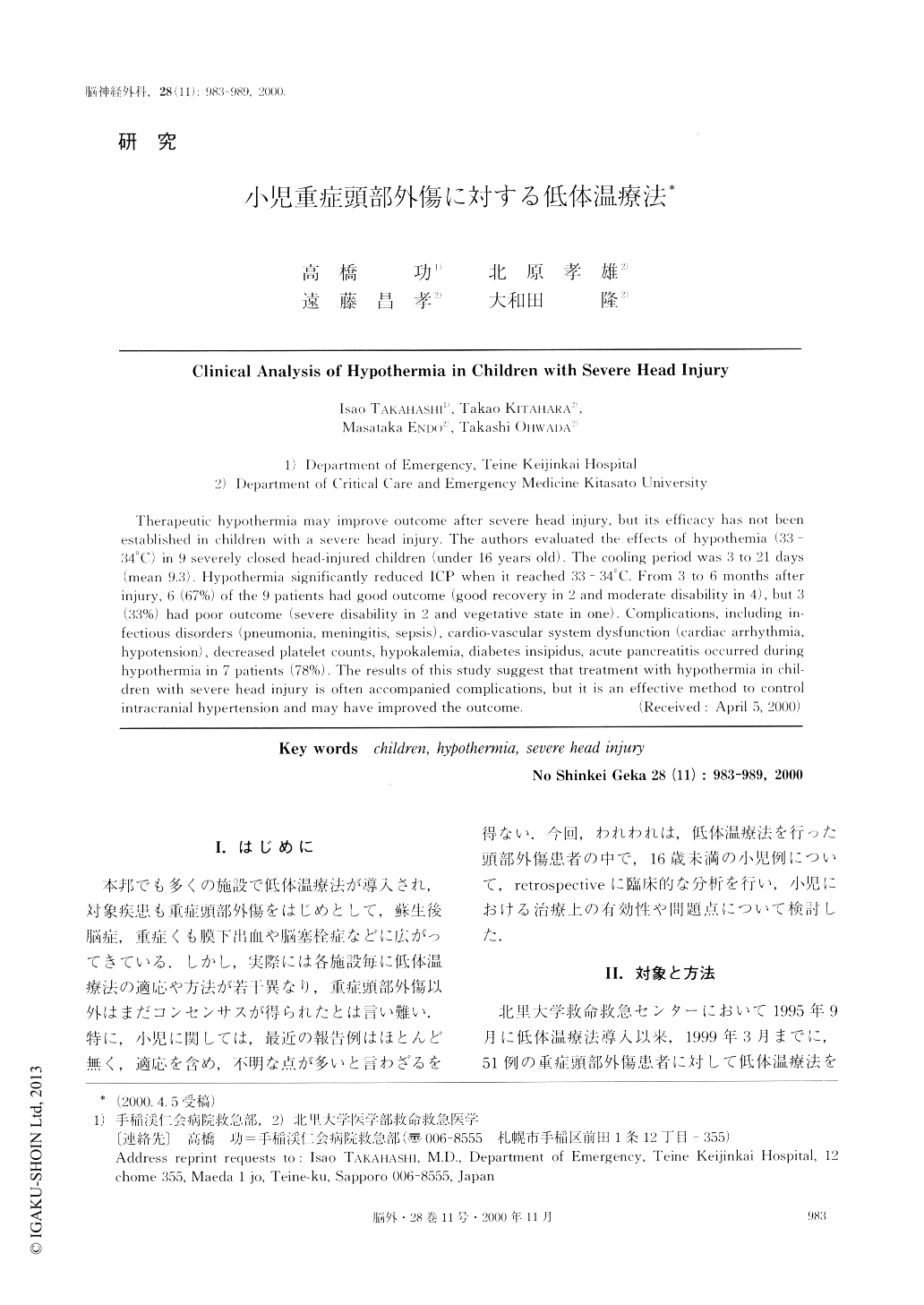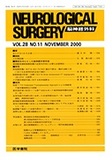Japanese
English
- 有料閲覧
- Abstract 文献概要
- 1ページ目 Look Inside
I.はじめに
本邦でも多くの施設で低体温療法が導入され,対象疾患も重症頭部外傷をはじめとして,蘇生後脳症,重症くも膜下出血や脳塞栓症などに広がってきている.しかし,実際には各施設毎に低体温療法の適応や方法が若干異なり,重症頭部外傷以外はまだコンセンサスが得られたとは言い難い.特に,小児に関しては,最近の報告例はほとんど無く,適応を含め,不明な点が多いと言わざるを得ない.今回,われわれは,低体温療法を行った頭部外傷患者の中で,16歳未満の小児例について,retrospectiveに臨床的な分析を行い,小児における治療上の有効性や問題点について検討した.
Therapeutic hypothermia may improve outcome after severe head injury, but its efficacy has not been established in children with a severe head injury. The authors evaluated the effects of hypothemia (33-34℃) in 9 severely closed head-injured children (under 16 years old). The cooling period was 3 to 21 clays (mean 9.3). Hypothermia significantly reduced ICP when it reached 33-34℃. From 3 to 6 months after injury, 6 (67%) of the 9 patients had good outcome (good recovery in 2 and moderate disability in 4), but 3 (33%) had poor outcome (severe disability in 2 and vegetative state in one). Complications, including in-fectious disorders (pneumonia, meningitis, sepsis), cardio-vascular system dysfunction (cardiac arrhythmia, hypotension), decreased platelet counts, hypokalemia, diabetes insipidus, acute pancreatitis occurred during hypothermia in 7 patients (78%). The results of this study suggest that treatment with hypothermia in chil-dren with severe head injury is often accompanied complications, but it is an effective method to control intracranial hypertension and may have improved the outcome.

Copyright © 2000, Igaku-Shoin Ltd. All rights reserved.


